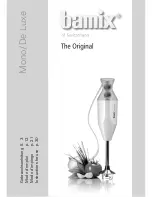
37
vocal. A compression ratio of 10:1 or above changes the compressor into a limiter. A limiter is
used to prevent short term peaks, which add little information to program material, from
overloading amplifiers or tapes. The
A
lesis
MICRO LIMITER
is an example of a
compressor/limiter.
Cue Mix
- The mix sent to musicians studio headphones is called the Cue Mix. This mix is
usually different from the one that is being heard in the control room, since the musicians
frequently require certain instruments to be of a different volume or absent altogether in order to
"cue" off of. The
1622 MIXER
is capable of supplying either 2 mono or 1 stereo Cue Mix.
dBV
- Decibels per Volt. This is a unit of measurement normally applied when measuring the
inputs and outputs of most modern sound equipment. Technically speaking, this is measured
when a low impedance source is fed into a high impedance input, as is the case in nearly all
current sound equipment. +4dBV = 1.4 volts AC, 0dBV = .778 volts AC.
Delay
- An electronic effect in which the original signal is repeated and mixed back in with the
original signal. Usually, the number of repeats and the length of time between the repeats can
be adjusted. Also sometimes known as Echo.
Direct Outputs
- This jack contains the amplified (and EQ'ed) signal of only one channel,
which has not been mixed together with other signals in the mixer. This is generally used to feed
a single track of a tape machine. Because the Direct Output is the path with the least amount of
circuitry and therefore the lowest possible background noise, it is most desirable to use. The
1622 MIXER
has a Direct Output on each of the first 8 Input Channels.
Distortion
- Any deviation in the amplified signal from its original. Distortion may take many
forms such as certain frequencies becoming louder or softer after being amplified (frequency
response), unwanted signal artifacts when two or more signals are amplified at the same time
(intermodulation distortion), or certain harmonics of a signal being favored over others (harmonic
distortion).
Echo
- See Delay.
Edit Bay
- An Edit Bay is the equivalent of a video mixdown studio, where shots from different
reels are assembled onto a master reel. At this point, video effects such as wipes and fades are
also added.
Effects
- The term used for signal processing that is added to a signal to enhance its tonal
quality. These effects may be reverb, echo, EQ, compression, chorusing, flanging, etc.
Equalization (EQ)
- Equalization is the ability to adjust the tonal balance of a signal. This can
be of a very broad nature, such as the bass and treble controls of a home stereo unit, or of a
finely tuned nature, such as a graphic equalizer. The
1622 MIXER
has 2 bands of shelving type
EQ
(see shelving)
per Input Channel.
Fader
- The Channel Fader determines the overall volume level of the channel. It is normally
best to keep this Fader at about the 3/4 level for best headroom and lowest background noise.
Feedback
- Whenever a portion of an amplifier's output is returned to its input, and therefore re-
amplified, a loud howl called "feedback" is created. Most commonly, this occurs in sound
systems when the output of the loudspeakers is picked up again and again by a microphone
forming a feedback "loop".
Flanging
- First used in the sixties, "flanging" was achieved by the use of two tape recorders
that would record and play back the same program in synchronization. By alternately slowing
down one tape machine, and then the other, different frequency cancellations would occur.
Since the slowing down of the tape machines was done by hand pressure against the flanges of
the tape supply reels, the term "flanging" came into being. Today, flanging can be closely
simulated by most outboard effects processors such as the
A
lesis
MIDIVERB II
,
MIDIVERB III
,
Summary of Contents for 1622
Page 1: ...ALESIS 1622 Mixer Reference Manual ...
Page 4: ...Alesis1622 Monolithic Integrated Surface Audio Console USER S MANUAL ...
Page 6: ...3 ...
Page 46: ...43 ...








































